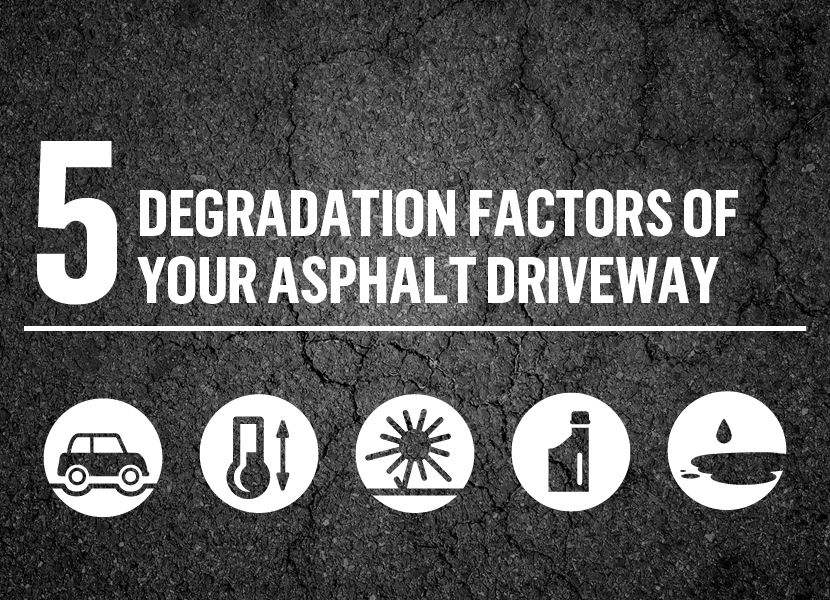Five Factors Contributing to the Degradation of Your Asphalt Driveway

Asphalt is an aesthetic, long-lasting and inexpensive material. Strong and flexible, it is an unmatched coating material for driveways as it can withstand regular traffic and heavy loads for years without breaking. Moreover, it requires minimal maintenance.
But just as for any material installed outdoors and subjected to harsh weather, the properties that give asphalt its strength will fade over the years. This is inevitable. Even if it is not possible to completely prevent aging of your paved driveway, there are solutions that will effectively slow damage down.
Whether on driveways or roads, asphalt is exposed to vagaries of climate at all times. Among these harsh weather conditions, here are the top five factors that cause degradation of an asphalt surface:
A vehicle regularly parked in the same spot will cause subsiding around the tire contact points, further compacting the granular base unevenly. Cracking in the asphalt surface is bound to happen, especially during very hot weather because heat softens the asphalt. Moreover, under a considerable weight, the asphalt also tends to lose its shape.
During freezing and thawing, water that has seeped into the underlayer through cracks will cause the granular base to swell and subside, and this damage will eventually spread to the paved surface. Small cracks will grow bigger and, at a certain point, the damage cannot be repaired by filling cavities; a complete reconstruction is necessary.
The bitumen that gives elasticity to asphalt is sensitive to UV rays, which produce an oxidation reaction in the bitumen and harden it, making it lose its elasticity. Aggregates and sand bound by oxidized bitumen begin to crumble, and cracks appear. Cracks, when they grow bigger, can let water penetrate under the surface.
When bitumen is oxidized, asphalt turns gray.
Rainwater or melting snow is partly absorbed by the asphalt porosity. An erosion phenomenon impacting the asphalt aggregates happens because water, just like UV rays, hardens the bitumen. In addition to accelerating surface erosion and deepening cracks by erosion, water accumulated on the asphalt surface will tend to penetrate under the surface. Underlayer compaction is thus softened, and the asphalt surface will crack under heavy loads.

